Our cases and articles
... case studies of COVID-19 outbreaks that we and others have assessed with the COVID-19 Localisation Model, and other articles building on this work.
By Maurice Glucksman
24 March 2020
Viral infections happen in clusters. A forecasting tool that can be localised is essential: e.g. where should the next shipment of respirators be sent?
On 19 March 2020 Thomas Pueyo published this follow up article that examines in detail at a country level how to manage the Covid-19 response. He called it ‘The Hammer and Dance” to provide a metaphor for hitting hard like a hammer and then reacting in a dance with the outbreak to keep it at bay until a vaccine is available.
In response to this article a week earlier by Thomas Pueyo: a sobering call to action; we were by coincidence working on a tool that can be part of implementing the Hammer and The Dance. We believe this is powerful idea and until something better comes along its important to support it.
Decisions are made in different countries at different levels whether at nation state, county, town or village. Viral infections happen in local clusters that do not respect these organisational structures. Viral outbreaks must be managed locally around the cluster.
This article is a summary of work over the past week. It is just a start to answer a multitude of questions about how the Covid-19 virus and load on the healthcare system is evolving. We are using dynamic modelling to look ahead and anticipate bottlenecks and stresses. Our first focus is the stress on the healthcare system.
By Maurice Glucksman
6 April 2020
Will it be over by June? O
Our mission is to answer questions like these by getting you the reader to do it for yourself using the tools we have created.
By Danendra Argyaputra Sakti, Maurice Glucksman and Alvin Cheng
14 April 2020
Up to 4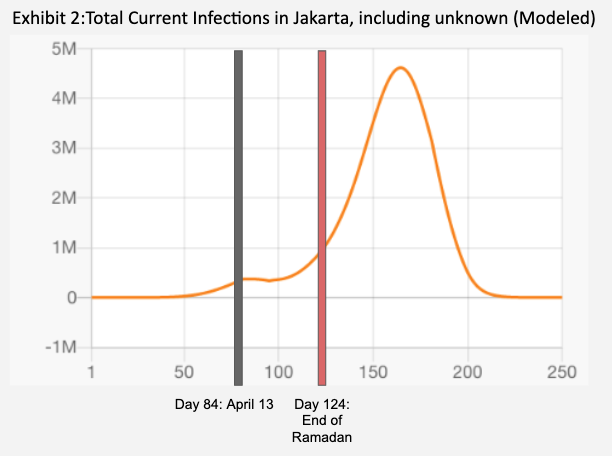 Million people were expected to leave Jakarta at the end of Ramadan at the end of May. The Jakarta Localisation model projected 1million people or 10% of the population would be infected.
Million people were expected to leave Jakarta at the end of Ramadan at the end of May. The Jakarta Localisation model projected 1million people or 10% of the population would be infected.
400,000 infections would spread throughout Indonesia resulting in up to 700,000 deaths.
This article shows the impact for two locations: Medan and The Regency of Tegal. These cites have different population age demographics and geography so they are impacted differently: the local governments can prepare better with this knowledge.
Subsequent actions by the National government banning travel have been important but 1.8 million people left Jakarta for Ramadan after the article was written
This article will be updated soon
By Dr Glenn Cornett, Maurice Glucksman
15 April 2020
New York City has been suffering an ordeal of historic proportions. The prospect of what may happen in Indonesia makes the situation in NYC seem tame by comparison. It is definitely not that at all. Many of our friends and families there are in a state of shock at the escalating death toll and the widespread suffering.
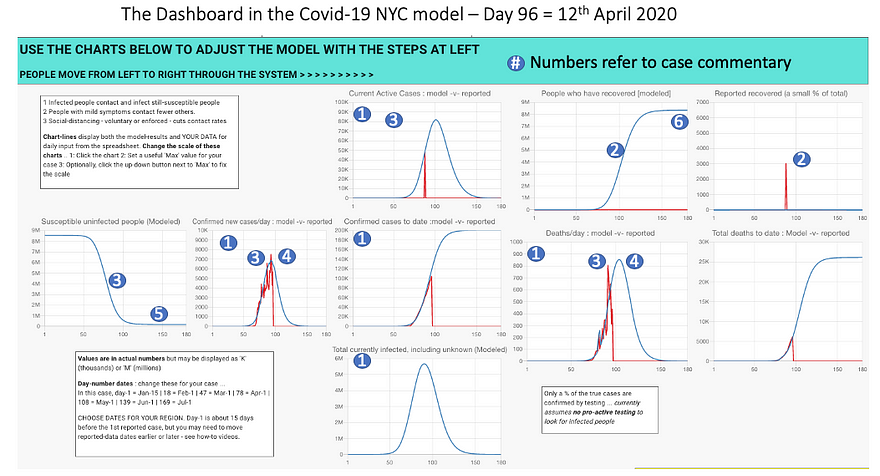
We fully expected when we set out to localise the model for NYC to see a long drawn out fight against COVID 19 for months, perhaps a year. Instead, we were shocked by the first case study showing that NYC appeared to be almost halfway through the pandemic. The updated data seems to verify this is the path NYC is on.
By Alan Patrick, Maurice Glucksman
24 April 2020
The first reported case in The UK was on 23rd January when a person flew into the UK from China. The first UK local case was reported on 19th February. Despite other parts of the UK having recorded infected people first, London fairly soon became — and remains as of today — the UK’s epidemic centre. A large and transient multi-national population, four international airports and one Eurotunnel hub, little screening of arrivals (to this day), a high population density and (still) crowded public transport are most probably the main causes. The UK Government’s originally tried a “test and trace” strategy. It was largely the rapid take-off of the disease in London that forced it to shift to an increasingly severe series of public health strictures, culminating in a strict, formal country-wide lockdown on the 23rd of March.
As of today, London is in its 4th week of lockdown, and the UK government has to now decide the best exit strategy from the lockdown, its choices are essentially whether to continue with the cu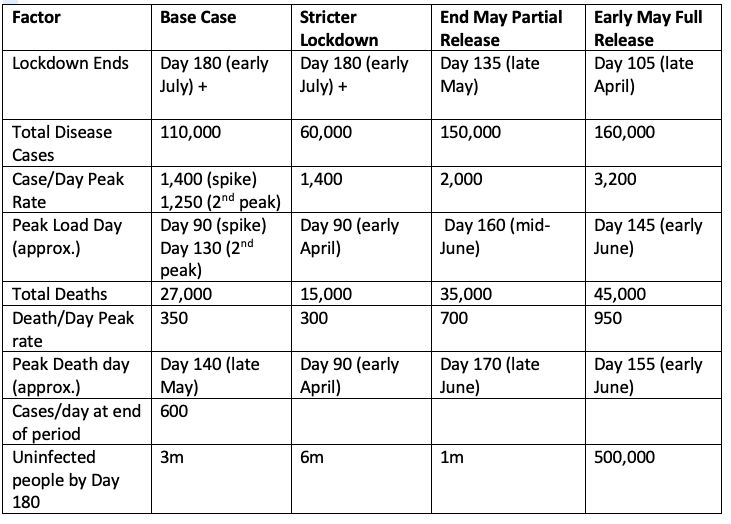 rrent strictures, tighten them up further, or start to lift them.
rrent strictures, tighten them up further, or start to lift them.
To examine possible exit strategies, we have built a system dynamics model, validated it against peer reviewed research and constructed a range exit scenario to see how those options impact our choices. Right now, these are presented crudely as single policy choices. The reality is there are multiple policy options and some of them work powerfully in combination. We are headed there shortly but not in this article. This article is to give you a feel for what is possible.
By Alvin Cheng, Hayden Cheng, Maurice Glucksman
24 April 2020
This is the second in our series of articles on Hong Kong. Here we aim to show you how our modelling of the COVID 19 outbreak provokes critical questions and informs answers to how Hong Kong can navigate an exit from a “walled city trap”.
Hong Kong has set an example for other cities and regions for containing its outbreak but at the cost of aggressively locking down and leaving almost everyone in the territory susceptible to infection by COVID-19. Without extraordinary vigilance a new outbreak could start and grow very rapidly.
After a recap of the history there is a review of the insights from setting up the model and some scenarios that show the consequences of certain actions the people of Hong Kong could decide to implement. In later articles we will expand on this.
Hong Kong is not alone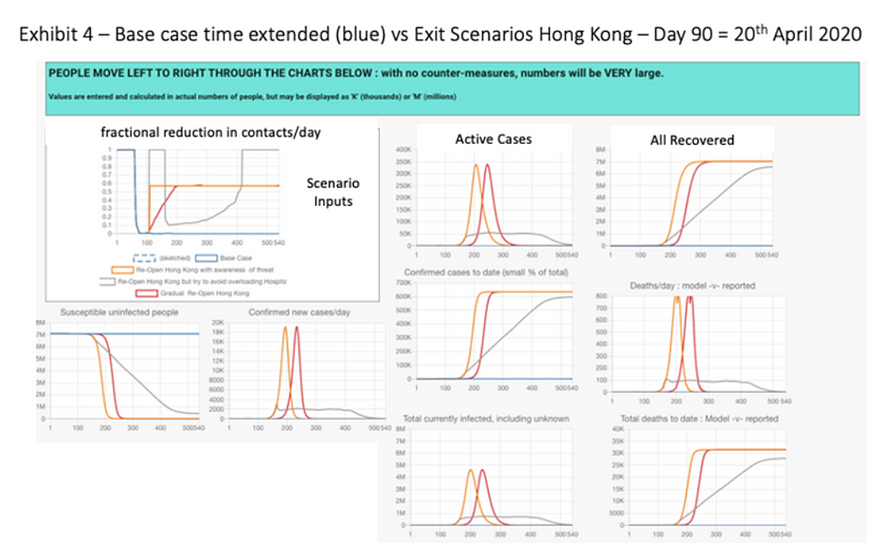 in what must be a frustrating situation. Many other cities around the world have adopted Hong Kong’s approach. We hope that, after reading this, the reader will share ideas for how Hong Kong could escape. The obvious one is, of course, a vaccine … but we can’t help with that and it could take some time. We have been working to identify other ideas to help Hong Kong as soon as possible and we hope this will help other locations facing a similar dilemma, possibly including: Greece, Ghana, Singapore, Los Angeles, Australia and New Zealand, and every city or region that has succeeded in containing COVID-19 at the risk of stifling their livelihood.
in what must be a frustrating situation. Many other cities around the world have adopted Hong Kong’s approach. We hope that, after reading this, the reader will share ideas for how Hong Kong could escape. The obvious one is, of course, a vaccine … but we can’t help with that and it could take some time. We have been working to identify other ideas to help Hong Kong as soon as possible and we hope this will help other locations facing a similar dilemma, possibly including: Greece, Ghana, Singapore, Los Angeles, Australia and New Zealand, and every city or region that has succeeded in containing COVID-19 at the risk of stifling their livelihood.
By: Maurice Glucksman, Dr Richard Kock, Andre Nemec, Shankar Suryanarayanan, Hasna Virk and Dr Kim Warren
10 July 2020
This article is our story of efforts to set up our Covid 19 Localisation model and how we had some initial conclusions that illustrated very well why Localising the model is critical: the best strategy and actions for each neighbourhood were totally different. However we were very frustrated by the reactions of the media and while the local residents were very interested in our analysis it became clear we were missing a major element of the story: migration out of the area was changing everything.
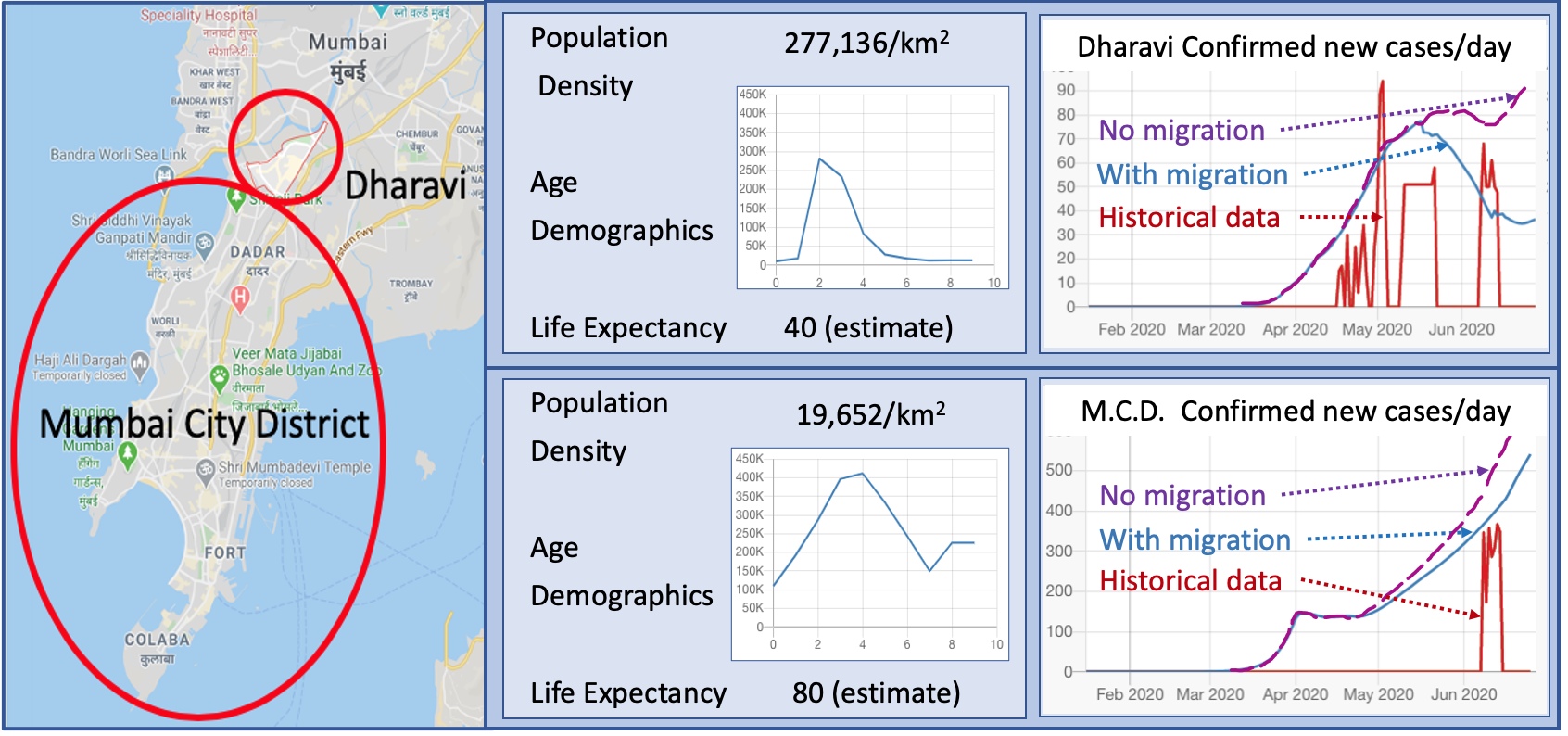
By: Harshita Magroria, Sukhada Gole, Sonam Maske, Viraj Shende, Yashashree Rane
9 November 2020
We are a group of University Students in Mumbai studying Chemistry, Economics, Finance, Political Science and Public Policy; simultaneously involved in the Elected Representative Fellowship programme at Praja Foundation. We are also concerned citizens of Mumbai. In August we set out build on the earlier work by the Covid 19 Localisation Modelling Group to understand: what is happening now and what may happen next in Mumbai with respect to COVID-19?
By contrasting the residential slum and non-slum areas in our analysis, we have been able to foresee: